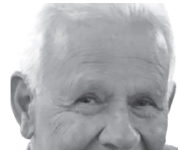By ERIK CHALHOUB, Managing Editor
In July, I received a dreaded piece of mail: a summons for jury duty.
The summons told me that I had to be “on-call” for a two-week period in August — or else. However, within that period of time was an event I had been planning on attending for months, so I was able to delay my summons for five months.
So it happened that I received another summons in January, telling me my new two-week on-call period would be from Jan. 29-Feb. 9. Wanting to get this monkey off my back, I decided to get it done and over with and not request another extension.
The first six days went pretty well. I was told to call every day after 5 p.m. to find out my fate for the next day, i.e. whether or not I would be coming into work. I kept dodging the bullet.
But my luck ran out on Feb. 6, when I was told to report to the court in San Jose the next day at the ghastly hour of 7:45 a.m. I hurriedly canceled my work-related appointments for that day, telling them I had to perform my “civic duty.”
The next morning, what should have been a 50-minute drive turned into an hour and a half (I will complain about traffic in a future column), and I pulled into a parking lot in downtown San Jose at 8 a.m., well past my reporting time.
I was relieved when I learned I wasn’t the only one late. While waiting to go through the airport security-like entrance of the court, complete with a large framed portrait of President Donald Trump looking down at me with a forced smile, a man got in line behind me and asked if I was also there for the 7:45 a.m. reporting time.
“I came all the way from Soledad,” he said. “I had to miss work because of this.”
Lucky for him, the court excuses potential jurors if they have to travel 60 miles or more. Unfortunate for me, as my car’s odometer read 52 miles traveled.
I made my way into the juror waiting room, which was filled with about 40 people sitting in complete silence, some twiddling on their phones while others tried to engross themselves in a book.
The clerk told me to fill out a form describing any hardships I may have. I did, describing two legitimate issues that would prevent me from serving any time as a juror.
After showing us a 15-minute video portraying “real” jurors describing the “great” experience they had, the clerk told the room that the first round of excusing would commence at 9:15 a.m. It was now 8:45 a.m.
However, she did warn us that the court was experiencing an “unusually high” amount of cases, and jurors were in desperate need. The more people who said they had a hardship, the less people that would be excused.
One man asked if he could move his car while everyone waited.
“Yes, you can, but don’t run away,” the clerk told him. “We know where to find you.”
A half-hour wait turned into nearly two hours, and at 10:30 a.m. another court official entered the room and began reading off the list of names of those excused.
My name was called second, and never have I been so happy to hear my name horribly mispronounced.
All those hours spent away from work, and that was just one person.
According to the Center for Jury Studies, the estimated cost for unused jurors is about $1,000 per day, per juror. The study also found that the courts typically incur only $25 to $150 of that cost; the rest befalls on jurors, their employers and their communities.
A 2007 study by the National Center for State Courts showed that of the 10.2 million summonses mailed to California residents, only 192,884 of those people were selected to serve on a jury.
The costs add up. For a country whose economy is slogging along and has millions of citizens living paycheck to paycheck, perhaps we need to rethink the jury selection process.
•••
Erik Chalhoub can be reached at 761-7353 or ec*******@********an.com.










